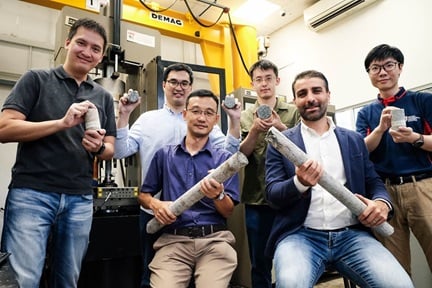Wind turbine on Semakau Landfill can power as many as 35 HDB flats a year
First published online at The Straits Times

SINGAPORE - A massive wind turbine stands on Pulau Semakau, about 8km south of the mainland, and it can generate enough wind energy to power as many as 35 Housing Board flats annually.
Towering at 42.5m, the three-blade wind turbine, constructed by French energy firm ENGIE, produces about 20 kilowatts (kw) of electricity per hour, based on the wind conditions in Singapore.
At that rate, it can generate enough energy to power between 30 and 35 Housing Board flats of various sizes in a year, said an ENGIE spokesman.
According to the National Climate Change Secretariat website, commercial wind turbines operate at wind speeds of above 4.5m per second, but the average wind speed in Singapore is only about 2m per second.
The wind turbine is part of a research and development facility at Semakau Landfill launched on Thursday (Nov 26) by the French firm's local research arm ENGIE Lab Singapore, to test new clean energy technology.
The facility also has a platform to generate electrical energy from hydrogen fuel, and a refuelling station for electrical vehicles.
The launch of the facility was witnessed by Mr Marc Abensour, the French ambassador to Singapore.
It was developed in collaboration with the Renewable Energy Integration Demonstrator Singapore (REIDS) programme, under the Nanyang Technological University's (NTU) Energy Research Institute, which looks at sustainable and affordable energy access in South-east Asia and future electricity distribution in urban areas.
Mr Paul Maguire, president and regional chief executive officer of ENGIE for the Asia Pacific, said the facility showcases the firm's expertise in developing smart energy grids and energy efficiency for smart cities.
ENGIE Lab Singapore managing director Loic Villocel called the facility a "timely addition", given the increasing focus in Singapore on low-carbon energy research and the use of hydrogen.
Professor Lam Khin Yong, senior vice-president of research at NTU, said the project is one of the largest living testbeds managed by the university's researchers, integrating multiple energy sources and storage solutions to reduce the Republic's carbon footprint.














/enri-thumbnails/careeropportunities1f0caf1c-a12d-479c-be7c-3c04e085c617.tmb-mega-menu.jpg?Culture=en&sfvrsn=d7261e3b_1)

/cradle-thumbnails/research-capabilities1516d0ba63aa44f0b4ee77a8c05263b2.tmb-mega-menu.jpg?Culture=en&sfvrsn=1bc94f8_1)






